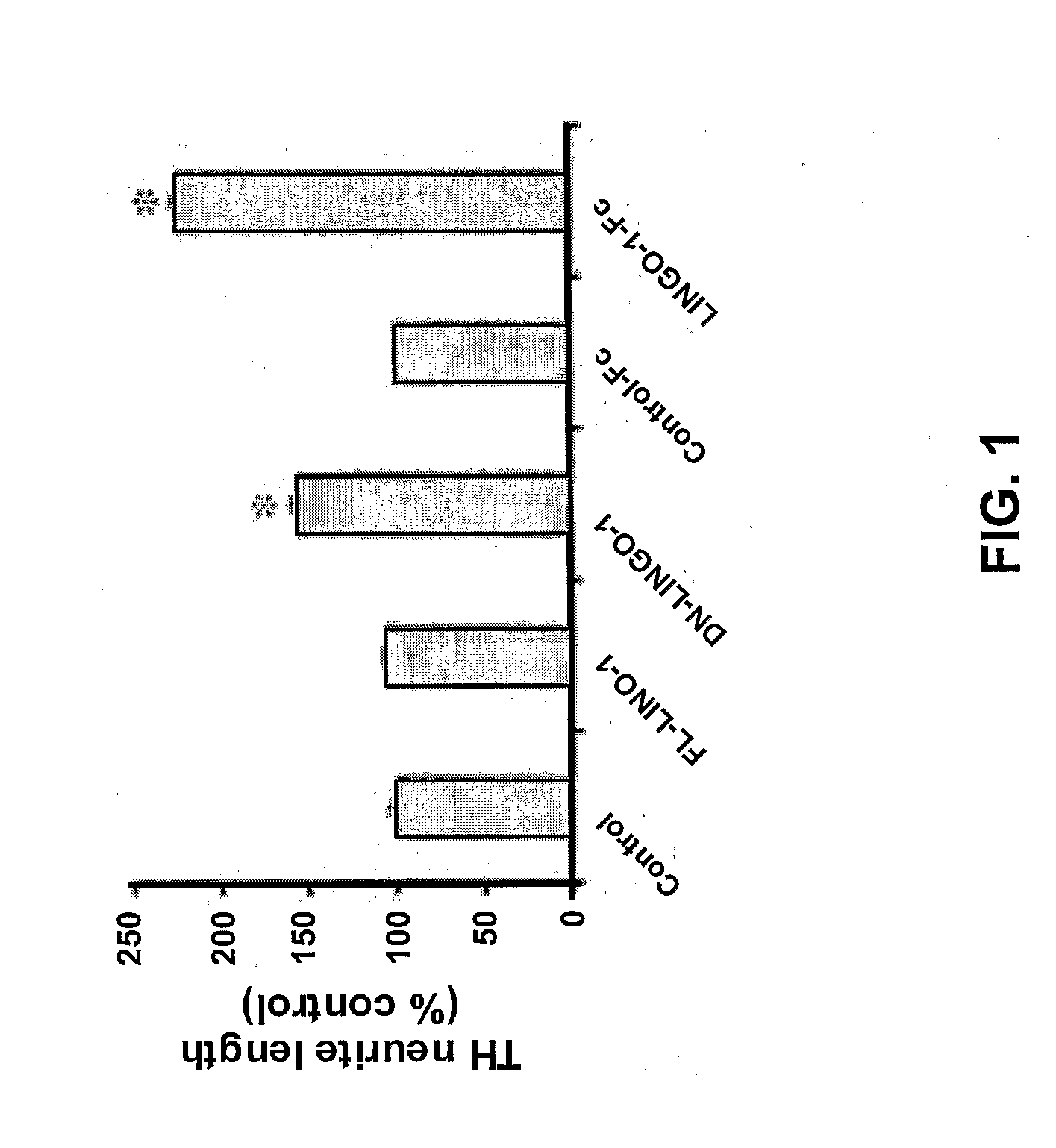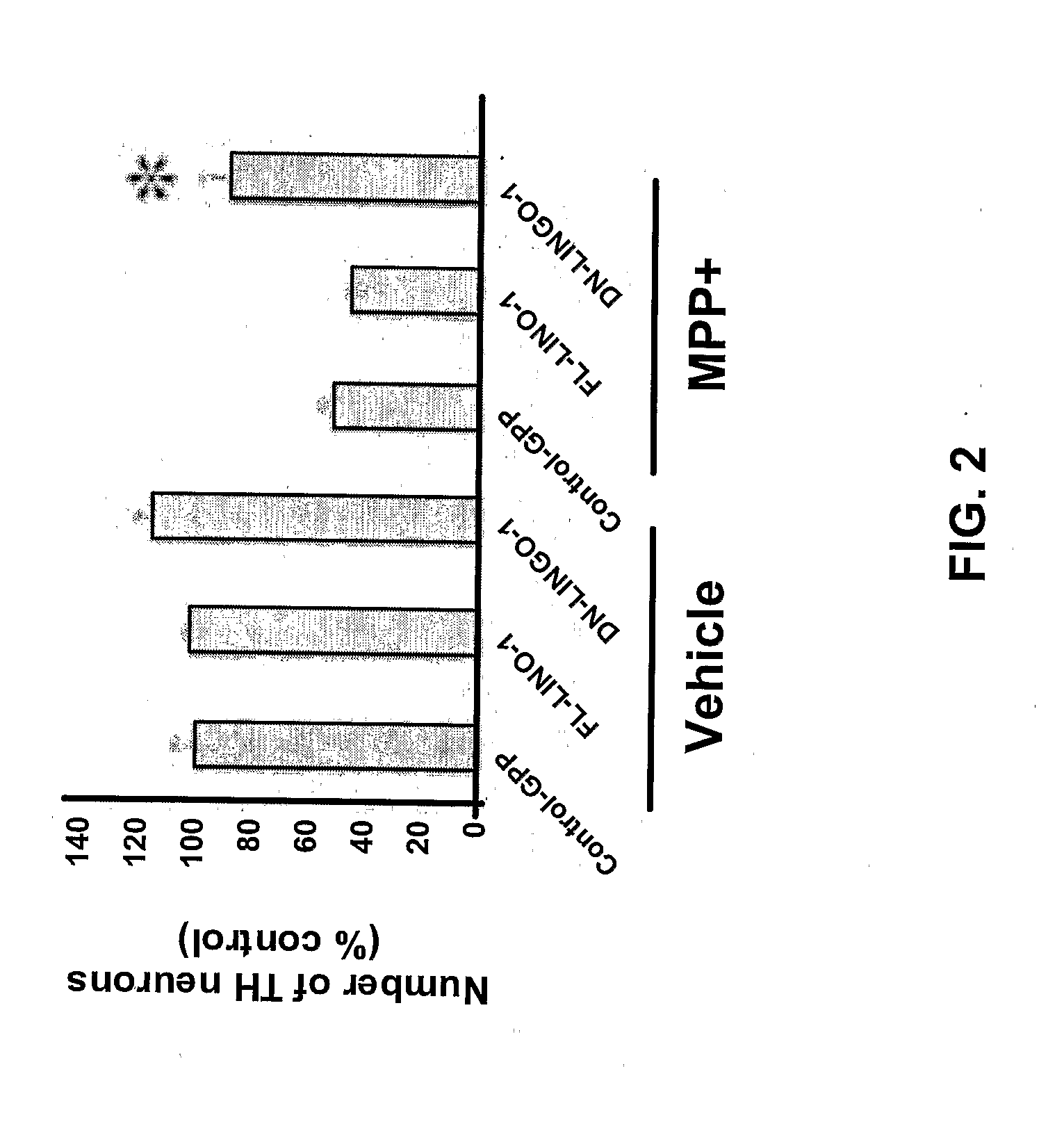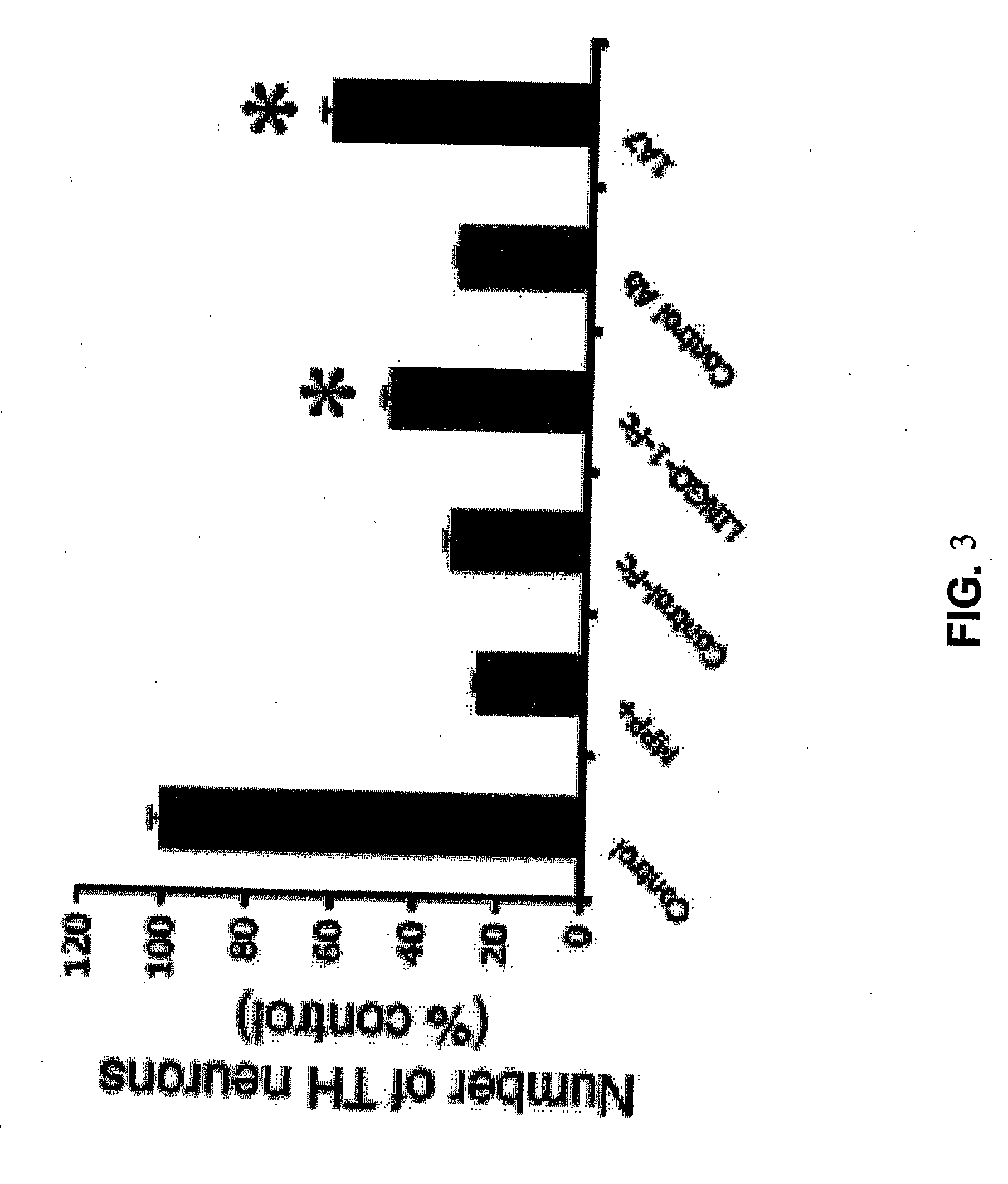Methods for Promoting Neurite Outgrowth and Survival of Dopaminergic Neurons
a dopaminergic and neurite technology, applied in the field of neurobiology and molecular biology, can solve the problems of reducing the level of the chemical transmitter dopamine, l-dopa use disadvantages, and less responsiveness, and achieve regeneration, outgrowth and survival, and reduce the inhibition of dopamine.
- Summary
- Abstract
- Description
- Claims
- Application Information
AI Technical Summary
Benefits of technology
Problems solved by technology
Method used
Image
Examples
example 1
Sp35 (LINGO-1) is Expressed in Rat Midbrain Dopaminergic (DA) Neurons
[0273]The expression of Sp35 was evaluated in postnatal day 7 (P7 stage) rat brain, adult rat brain and rat primary embryonic cultures (E15) by immunohistochemistry and / or in situ hybridization. Frozen rat brain sections were prepared from rats at the P7 and adult stages of development mentioned above. Brain sections were prepared for in situ hybridization using the following protocol and as described in Mi et al. Neurosci. 7:221-228 (2004). Animals were euthanized with CO2. The brains were quickly removed and fixed with 10% neutral buffered formalin for 48 hours. Brains were equilibrated in 30% sucrose in PBS for cryoprotection and sectioned serially. In situ hybridization was performed on randomly selected series of sections that contain every 6th of the total ventral midbrain.
[0274]The brain sections were probed with digoxigenin-labeled Sp35 antisense and sense RNA. The sections were stained using the TSA plus f...
example 2
Sp35 (LINGO-1) Antagonists Promote DA Neurite Outgrowth and Survival In Vitro
[0279]The cytoplasmic domain of Sp35 contains a canonical EGFR-like tyrosine phosphorylation site and thus has the potential for direct or indirect involvement in signaling. To evaluate the importance of the cytoplasmic domain, a truncated form of Sp35 (DN-Sp35) which lacked the cytoplasmic domain was created (amino acids 34-581 or 34-548 of SEQ ID NO:2). It has been shown that a truncated form of Sp35, with a deletion of the cytoplasmic domain, functions as a dominant negative (DN) molecule by forming a complex with Nogo receptor 1 (NgR1) and p75NTR and / or another receptor such as TAJ / TROY, thereby preventing signaling. See Shao et al. Neuron 45: 353-359 (2005) and Park et al. Neuron 45:345-351 (2005).
[0280]Lentiviruses were created which express full-length (FL)-Sp35 (amino acids 34-614 of SEQ ID NO:2) or dominant negative (DN)-Sp35 using the following methods and as described in Mi et al. Neurosci. 7: 22...
example 3
Blocking Sp35 Activity Induces Akt Phosphorylation
[0286]Akt is a downstream effector of the PI3 kinase survival pathway. Williams and Doherty Mol. Cell. Neurosci. 13:272-280 (1999). Levels of normal Akt phosphorylation in rat primary VM cultures were assessed by Western blot analysis. Rat primary VM neurons were transduced with lentiviruses expressing FL-Sp35 or DN-Sp35 (HA-tagged) as described in Example 2. Transduced rat primary VM neurons were harvested after 48 hours and lysed in 500 μl lysis buffer (50 mM HEPES (pH 7.5); 150 mM NaCl; 1.5 mM MgCl2; 1 mM EDTA; 1% Triton X-100 and 10% glycerol) for 30 minutes at 4° C. The supernatants were electrophoresed on a 4-20% SDS-PAGE gel (Bio-Rad, CA), transferred to immunoblot membrane and probed with either anti-HA affinity matrix (Roche, Switzerland) or anti-phospho Akt antibody (Cell Signaling, MA), or anti-total Akt antibody (Cell Signaling, MA).
[0287]Akt phosphorylation was significantly increased after transduction of rat primary VM...
PUM
| Property | Measurement | Unit |
|---|---|---|
| total molecular weight | aaaaa | aaaaa |
| dissociation constant | aaaaa | aaaaa |
| dissociation constant | aaaaa | aaaaa |
Abstract
Description
Claims
Application Information
 Login to View More
Login to View More - R&D
- Intellectual Property
- Life Sciences
- Materials
- Tech Scout
- Unparalleled Data Quality
- Higher Quality Content
- 60% Fewer Hallucinations
Browse by: Latest US Patents, China's latest patents, Technical Efficacy Thesaurus, Application Domain, Technology Topic, Popular Technical Reports.
© 2025 PatSnap. All rights reserved.Legal|Privacy policy|Modern Slavery Act Transparency Statement|Sitemap|About US| Contact US: help@patsnap.com



